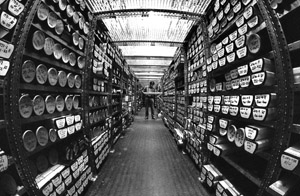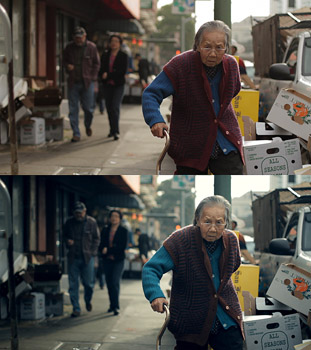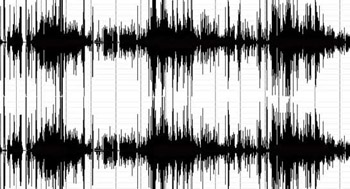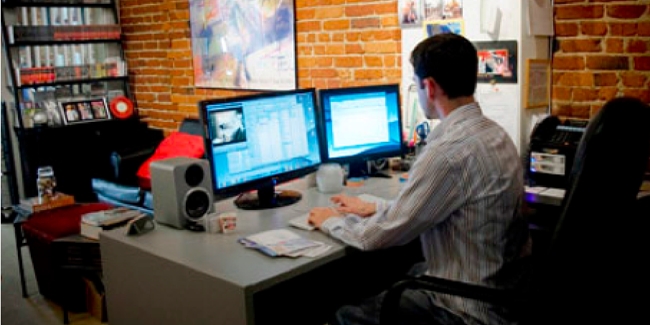Every editor approaches editing differently; applies different practices and holds different perspectives. Some people say that you shoot two movies; one when you’re filming, one in the edit. I disagree, you’ve got the footage you want (or best physically achievable) now it’s a question of how and what you’re putting together.
REVIEW

Tedious? Maybe. Enlightening? Could be. Entertaining? Usually.
The Review process is when you look through all of your footage and I mean ALL of your footage. Perhaps you made notes on what were the best takes but let’s assume you didn’t.
Reviewing means you will look at every second of every clip to ensure you have the best shots that are of the best quality. No short cuts either, because you might just miss the best ten seconds you’ve ever filmed.
Reviewing also helps you become familiar with your footage, you may not remember every second of what you’ve filmed but you will have a general idea of what you do and do not have which is a memory that can be triggered by the need for a certain shot.
 LOG & ARCHIVE
LOG & ARCHIVE
Once a clip is viewed I give it a file name that is relevant to what the footage is e.g. ‘Girl running in park 7238’. Really it doesn’t matter what you call it as long as it makes sense and you know what it is. Notice the numbers at the end? These are from the clip number produced by the camera when filming.
An interesting thing I learnt is that if you don’t delete them they can give you an idea of what take number they are without having to write them down and also works as a secondary way of searching for files should anything happen to your data.
With all the files (you intend to use) named they must be put into your editing software’s project. These files can be idly placed BUT if you have a lot then a level of file management is necessary.
Bins/Folders are essential to making your editing life easier. You can label them by scene, character, lighting set ups, days, camera (if there was more than one camera) basically whatever works for you; it prevents having 96 clips all in one place and makes navigating through your files a breeze.
Also try keeping your Jpegs, audio files and any other assets in their own folders, it’ll make a difference.
ASSEMBLING THE PUZZLE VS WORKING OUT THE FOOTAGE

There are two main ways of approaching the edit and it’s all to do with how it’s filmed.
If you have your shot list, storyboard or a general idea of the end product then in a way what you’re really doing is assembling pre-determined pieces into pre-determined shapes.
This is more common among scripted work. However, if what you have is footage filmed with the intention of giving it shape based on what footage you have then you are working out the footage. This is more common among event filming, things that may not follow a story or a script.
So which one’s the hardest? I’d have to say working out the footage. You might have an idea of what outcome you want so you just have to find footage that fits what you’re looking for but of you don’t then having a clear idea of the video’s intention will help greatly. Is it product awareness? Requires a specific reaction? Meant to give people a sense of being there? A visual feast?
Knowing this will help interpret the footage and utilise it to make the best video.
 TRIMMING THE FAT
TRIMMING THE FAT
It’s time to get rid of the bits you don’t need. Now this comes at two significant points; the assembly and the completion.
With the assembly you’ve made a “short list” of all the best clips/takes, you may have more than one, then you have to choose the best of the best. How do you do that? Well there’s a number of criteria.
Quality of shot: in focus, good lighting, good framing, interesting background.
Performance: good take, great take, cohesion with rest of video, intended delivery (of dialogue).
Pace: slow when you want it, fast when you need it. You may find that a take you weren’t going to use fits better with the video as a whole.
When nearing completion you may find that your video is too long or doesn’t flow as it should. In questions of length you need to be ruthless, if you don’t absolutely need it cut it.
Look at the flow; is it slowing it down or breaking the rhythm completely? Is the shot adding anything that the others aren’t?
With scripted work you can trim the fat by cutting out dialogue that doesn’t add to the video and whose presence will not be missed. For non-scripted such as music videos or event videos you pick the shots with the best visuals and the ones that have the best rhythm when looking at the video as an ensemble.
Don’t be afraid to be ruthless and sometimes it helps getting someone you trust to look at it with fresh eyes.
THE JOY OF GRADING
Grading is one of the last things done to your footage in the edit process and if you’re a professional no piece of work is complete until it’s done. Although it can be seen as tedious I see it as fun.
process and if you’re a professional no piece of work is complete until it’s done. Although it can be seen as tedious I see it as fun.
Why is it fun? You can change the look, feel, mood and even temperature all through the magic of grading. First things first, grading is a reductive exercise NOT an additive exercise. By that I mean you look at the colour that is in excess and reduce it or see what colour you want it to be then reduce the opposite.
An example of this would be if you wanted to make a room appear colder you would have to have the shot predominantly blue and the best way to do that is to reduce the levels of red.
When grading it’s not as straight forward as reducing a colour, there are three different adjustable areas of colour grading: shadows, mid-tones and highlights.
Shadows focuses on the darkest parts of the picture, highlights the brightest and mid-tones somewhere in the middle. You may find that grading the shadows one colour and the highlights another creates a unique look, give it a try; it’s really just a question of trial and error.
 CAN YOU HEAR ME NOW?
CAN YOU HEAR ME NOW?
Last but not least is the sound editing. Why last? You may change the edit, the shots, the takes used, trim or add a second here and there and because audio editing requires SO much effort in finessing it (if and when needed) it’s best to leave it ‘til last.
The one rule that is applicable no matter what you do with the sound is WEAR HEADPHONES! Speakers do not provide good enough audio for you to be as precise as you need to be.
What are the main things to watch, ahem, listen out for? Sound levels are the most obvious.
Having a scene that has one shot that’s really loud and another that’s really quiet will really take a viewer out of the moment. On your editing software there should be a meter that measures sound, as long as it doesn’t go into the red or “peak” you’re fine, but really this is just a guide and the best way to be sure is to use your own ears.
Background noise is the next area of focus. The absence of a slight hum of a fridge that you weren’t aware of in alternate shots will be very obvious when it’s all put together, hopefully you’ll have an “atmos track” which is a track of nothing but the room’s ambient sounds.
The atmos track is layered beneath the entire scene to create a sense of audio continuity. Alternatively you can dip the audio levels at the end and beginning of clips so the one audio fades into another.
This will take a lot of work if you’re not paying a professional to do but if you’re using headphones (which you should be) the rules are simple.
If you can barely hear an audio imperfection on headphones then it should be unnoticeable through speakers and if you can’t hear an imperfection though your headphones then you will not be able to hear it through speakers at all.
Thanks for listening.
Read more:
Tai Campbell, Creative Director, Epik Music Videos
23/01/2013
About EPiK:
EPiK Music Videos is a London based music video production company based in South London close to Camberwell. EPiK work with a diverse group of music video directors, each with the own style and individuality. We have made videos for some hard rocking dudes, British Indian heart throbs and many varieties in between.


